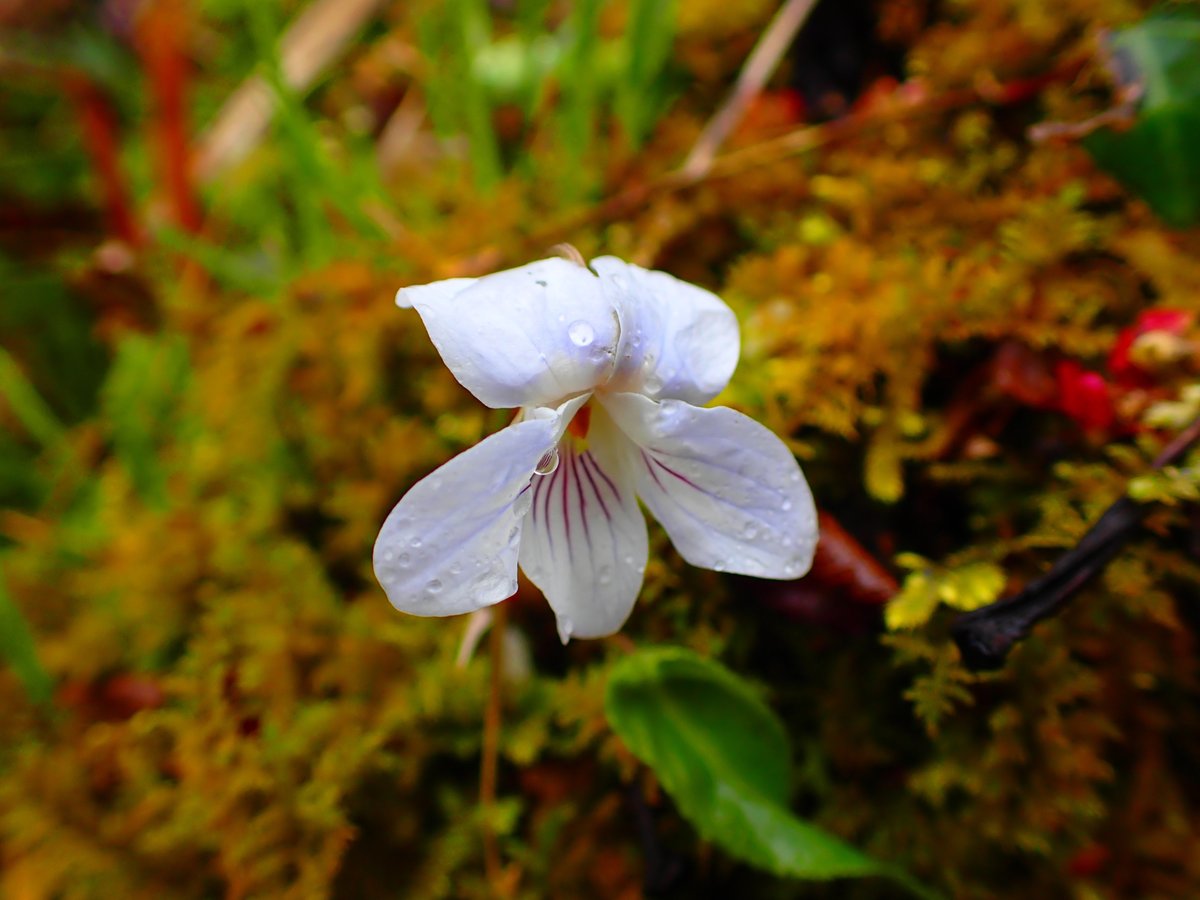
スミレの山 高尾山② ナガバノスミレサイシン Takao, the mountain of violets: No.2 Nagaba-no-sumire-saishin
:-:-:-:-:-:-:-:-:-:-:-:-:-:-:-:
高尾山は、知る人ぞ知るスミレの山。
日本では、約50種のスミレの野生種(*1)が確認されていますが、高尾にはそのうち18種が自生している(*2)と言われています。高尾山ならびにその周辺では、毎年3月上旬から5月下旬にかけて、あちこちで可憐なスミレの花々を観察することができます。
Mt. Takao is known as habitats for a wide variety of wild violet flowers (in Japanese, sumire, or “Sue-Mee-Ray”). In Japan, about 50 species of wild violets (*1) have been confirmed, and 18 of them are said to grow naturally in the Mt. Takao area(*2). Every year from the beginning of March to the end of May, you can find pretty violet flowers all over the place in Mt. Takao and its surroundings.
(Stealing and vandalizing wild plants in the areas designated under the Natural Parks Act are illegal and subject to a criminal charge.)
:-:-:-:-:-:-:-:-:-:-:-:-:-:-:-:

The one with large and wide petals. On the Kobotoke River Footpath.
ナガバノスミレサイシンは、高尾山では最も多く観察される種の一つ。他のスミレより早咲きなのと、スミレの中でも最大級の大きな花をつけるので、とっても目立ちます。
Nagaba-no-sumire-saishin (Viola bissetii) are one of the most commonly observed species in Mt. Takao. They bloom earlier than other violets and have the largest flowers among all, making them easy to spot on trails.

This one is a bit slim. On Minami Takao Ridge.
咲いている場所も多く、山中のみならず人家に近い里山でも多く見られます。大きな集団は作りませんが、その大ぶりの花は貫禄たっぷりで、株も大きいことから誰でも見つけることができます。
You can find them blooming in many places, not only in the mountains but also in on the cultivated land, or banks on a creek or forests near human habitation (referred to as “satoyama” in Japanese). Although they do not form large clusters, their large flowers stand out with conspicuous presence.

Almost pure white. On Jataki Trail.
誰でも見つけることができるのですが、咲く場所の環境の影響を受けやすく、花弁がでっぷりと太ったりスリムだったり、色も薄いピンク色や濃いめの紫色や瑠璃色、そしてそれらから純白に至るグラデーション各色を含めて様々なバリエーションがあり、花だけでは同じナガバノスミレサイシンと容易に同定できないかもしれません。
Although anyone can find them, it is not so easy to identify them; they are sensitive to and easily affected by the environment and soil they grow on. They may have petals that are wide or slim, and the color could vary in light pink, dark purple and lapis lazuli blue, and gradation from these to pure white. That makes it difficult to identify Nagaba-no-sumire-saishin only by flowers.

The one with very light pink color. On Minami Takao Ridge.
同定のポイントは葉。スミレサイシンの葉はウマノスズクサ科のウスバサイシンに似ていることがその名の由来ですが、本種はその特徴を持ちつつスミレサイシンより長細いことが特徴で、この点は全ての株に共通して観察することができます。花期終了後、この葉はとても大きく成長することも特徴のひとつです。
The key for identification is the leaf. The name comes from the fact that the leaves resemble those of Usuba-saishin (Asarum heterotropoides) and are stretched in shape, which is the common feature for all of them irrespective of the shape and color of the flowers. The characteristics also include that the leaves grow very large after the flowering period.

Multiple blooms with slim petals. On Nature Trail No.3.
*1
門田裕一,『日本の野生植物 3』, (平凡社、2016), P.209
Yuichi Kadota, "Wild Flowers of Japan 3," (Heibonsha K.K. 2016), P.209
*2
東京都 高尾山ビジターセンター
The Takao Visitor Center
この記事が参加している募集
この記事が気に入ったらサポートをしてみませんか?
